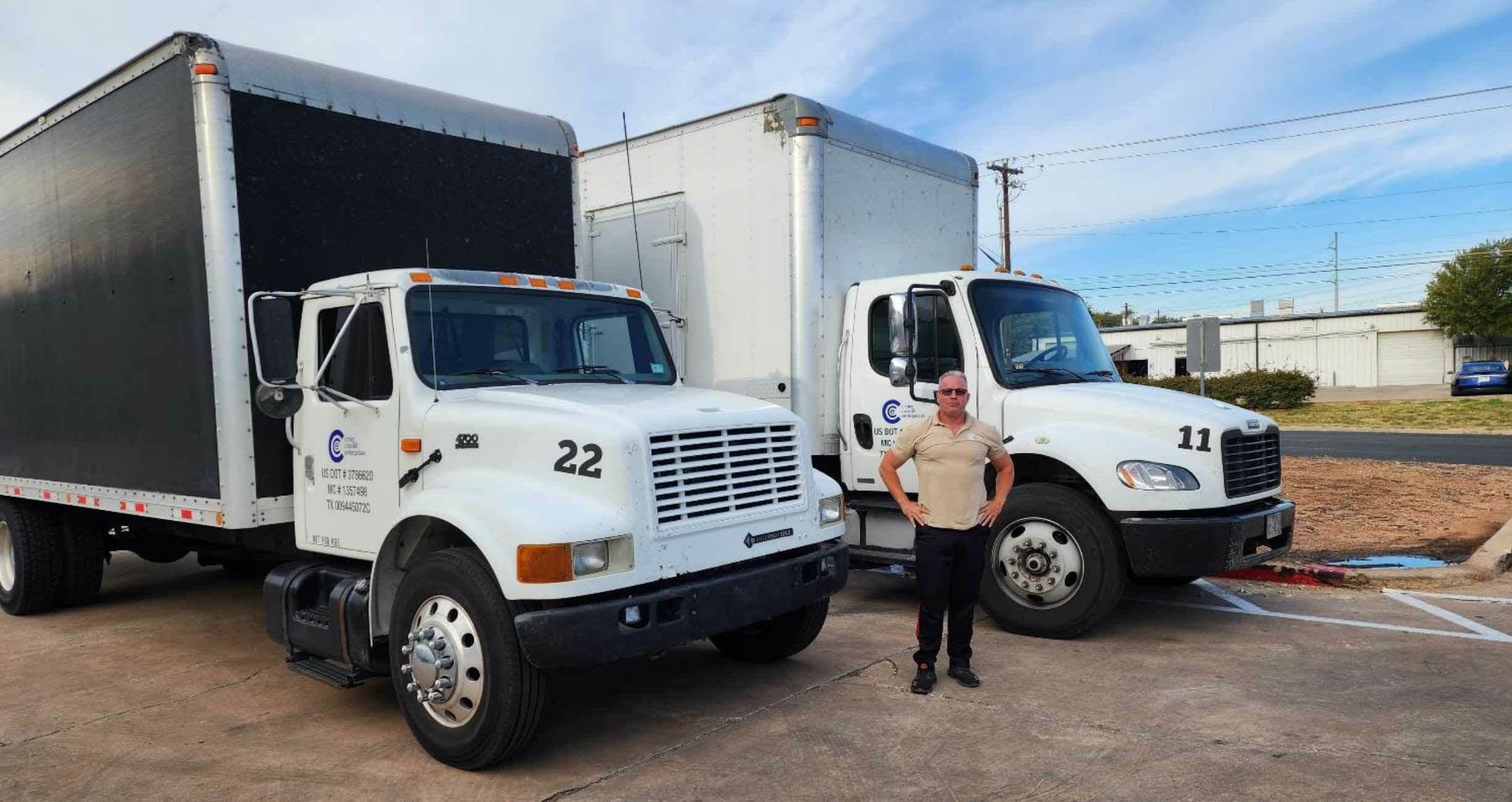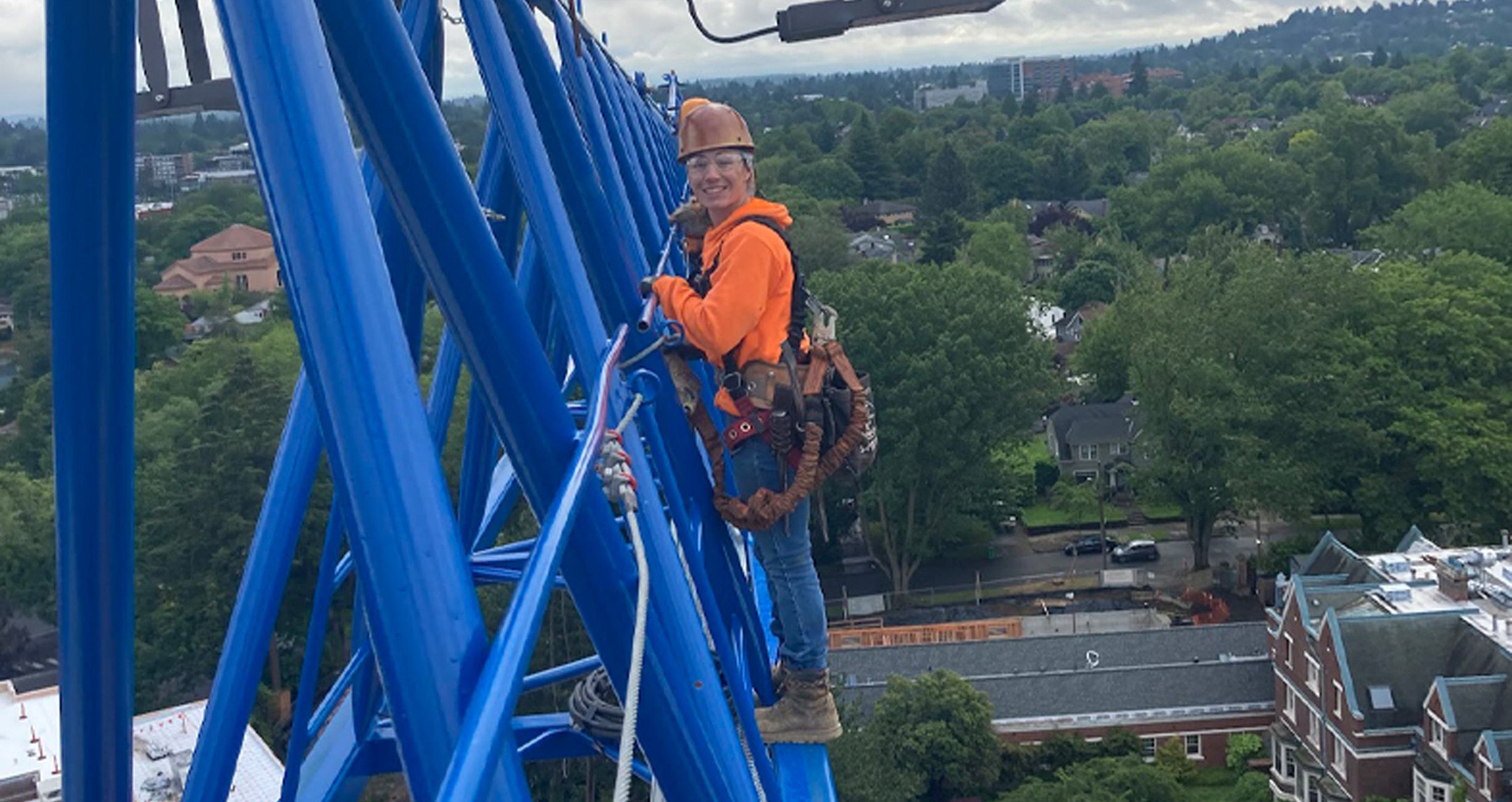New Partnerships Help Incarcerated People Find Jobs
Corrections departments, educators, and employers are increasingly working together to create job opportunities for people leaving prison.
Craig Caudill was incarcerated for 22 years in Texas. He knew he would be in his fifties by the time he got out and wondered what he would do. He’d previously had a career in radio but says he knew the industry wouldn’t let him back in.
“How am I going to pay my rent? How am I going to have any financial stability?” Caudill recalled asking himself. A veteran, he was diagnosed with PTSD about 10 years ago, while incarcerated.
“All of the progress I had made inside—emotionally and mentally—I didn’t want that to be hindered by the challenges of homelessness or to be confronted with the possibility of drugs and alcohol,” he said. “Employment had everything to do with that. To have something to do every day. To have something to work towards.”
He started looking into trades programs—he’d already amassed three associate degrees while incarcerated—and a warden suggested he enroll in the Commercial Driver’s License (CDL) Truck Driving program offered by Lee College at the John M. Wynne Unit in Huntsville, Texas. Caudill knew that there was demand for truck drivers and that the work paid well.
For more than 50 years, Lee College has offered postsecondary education to people incarcerated in the Texas Department of Criminal Justice (TDCJ) prison system. By the end of Lee College’s six-month CDL program, students have completed thousands of hours of driving practice, enabling them to enter the workforce as soon as they’re released from prison. The program also has close relationships with employers, and some visit the prison to recruit new drivers.
Caudill, who was released on parole in 2021, now runs his own trucking company, which he started in February 2022. He owns three trucks and is looking to buy a fourth. And he has two employees, people with whom he was incarcerated for 15 years.
“I make more money than I thought I was going to make for sure,” Caudill said.
Win-win-win scenarios
The CDL Truck Driving program and others like it, which prepare incarcerated people for well-paying jobs in high-demand fields, have vast appeal: for the more than 600,000 people leaving prison every year, these training programs can significantly reduce barriers to employment—and that benefits them and their families. It’s also a win for employers, who seek skilled workers and are increasingly relying on this largely untapped labor pool. By helping program graduates secure skilled, long-term employment when they leave prison, these training programs can help reduce the likelihood that they are reincarcerated. That makes communities safer—and lower incarceration costs can translate to millions in savings for taxpayers.
Minna Long just earned journey-level certification in iron work. Last fall, she qualified to compete against 57 other apprentices from across North America in the Iron Workers Outstanding Apprentice Competition, where she welded, built windows, tied rebar, and climbed columns. She just completed a second bachelor’s degree at Ohio University and plans to pursue a master’s degree in law next.
But until just five years ago, she was incarcerated at Washington Corrections Center for Women (WCCW) in Gig Harbor, where she spent eight years in prison.
She credits much of her success since then to Trades Related Apprenticeship Coaching (TRAC), a 16-week pre-apprenticeship program that prepares women incarcerated in Washington to become carpenters, cement masons, laborers, and iron workers. The Washington State Department of Corrections (WA DOC), which runs the TRAC program in partnership with the Washington State Board for Community and Technical Colleges, collaborated with four local unions to create the program curriculum. Graduates can join a registered apprenticeship program and, ultimately, find work that offers security, career advancement, and benefits.
Long graduated from the TRAC program—which requires students to pass a skills test in at least one of these trades—in 2017, the year before she left WCCW.
“You wouldn't believe the doors that have opened just from that one decision to do the program,” Long said. “I didn’t realize that by doing this—by just trying to take advantage of every opportunity to succeed—I didn't think I would fall in love with a trade.”
According to WA DOC, TRAC program graduates have a recidivism rate of less than 5 percent within three years after release, compared to the DOC recidivism rate for all women in the state, which is about 15 percent.

Creative partnerships
Other departments of corrections have developed similar programs that prepare incarcerated people for jobs in industries that demand skilled workers by partnering with colleges, employers, unions, and other groups. The Michigan Department of Corrections (MDOC), for example, offers a Line Clearance and Tree Trim Program, one of many trades available through its Vocational Village. The training program was created when local energy services provider DTE Energy approached MDOC about five years ago regarding the demand for skilled tree trimmers.
Thinking back on the partnership, Dean McGregor, assistant education manager at MDOC, reflected, “We have one of the largest energy companies here in the state of Michigan. They’re willing to hire our guys as they’re coming out. Why can’t we do this?” McGregor eventually spearheaded the program, which launched in 2019.
As of November 2022, Vocational Village graduates had an employment rate of 69 percent, and 60 percent of graduates of the tree trimming program are actively employed, according to McGregor. In contrast, national data suggests that up to 60 percent of formerly incarcerated people are jobless at any given time.
Additionally, the recidivism rate within three years after release for Vocational Village graduates is 11 percent, far less than the statewide average of 27 percent, according to McGregor.
Bridging the gap
The best programs offer ongoing reentry support to graduates as they return to their communities.
“The TRAC program bridges the gap,” Long said. “It gives you every contact you would need, it gives you every resource.” In fact, WA DOC attributes much of the program’s success to its collaboration with community partners and other local groups that provide reentry support.
“It’s really not just a 16-week program,” said Steve Petermann, who oversees the TRAC program. He said the program continues to support students, even years later.
MDOC and Lee College also help students secure identification documents, housing arrangements, transportation, and necessary work tools upon release. Many graduates leave with portfolios of their work.
“[Students] always say that when they show their portfolio, it takes the spotlight off the fact that they have an incarcerated past,” said Donna Zuniga, associate vice president of Lee College’s Huntsville Center. “It changes the conversation,” she added, by shifting the focus to their skill set.
The recidivism rate for formerly incarcerated people who have participated in Lee College’s programs is 6 percent, according to Zuniga, compared to the state’s recidivism rate of about 20 percent within three years after release. Zuniga credits not only the training programs for this success, but also the wraparound services, like counseling, that Lee College provides.
Building community in prison and outside
Long describes prison as a toxic and traumatic place. But she says she found love, support, and community in the TRAC program. And that’s extended to her work now. She calls her union hall her second home. She’s spoken at conferences to encourage state leaders to develop more programs like TRAC, and she’s testified at Oregon State Senate committee hearings as an advocate for worker’s rights.
Meanwhile, Caudill has found stability and security, which has allowed him to further explore his passions. This month, he starts as an adjunct professor at Lee College, where he will build up and coach the debate team he captained while incarcerated—when the team won against both Texas A&M University and Wiley College. His goal is to grow debate programs at prisons, first in Texas and then nationally. He also sits on Lee College’s advisory board for the trade programs, which offers guidance to teachers and instructors in prisons. Outside of work, Caudill volunteers with the veteran’s program in Williamson County, Texas, where he lives, and provides support to veterans with system involvement. And, of course, he coaches his great nieces’ soccer team.
“Those are the things I really love doing,” he said.
